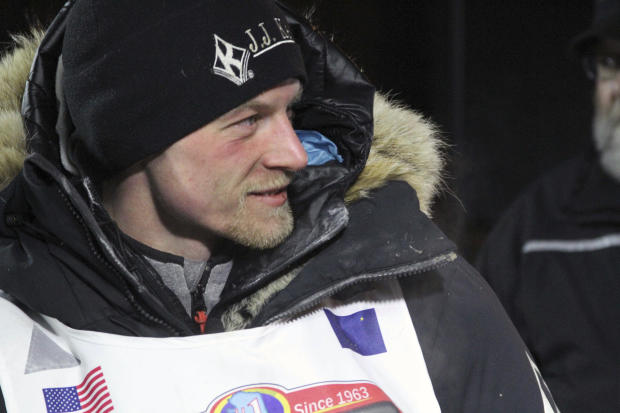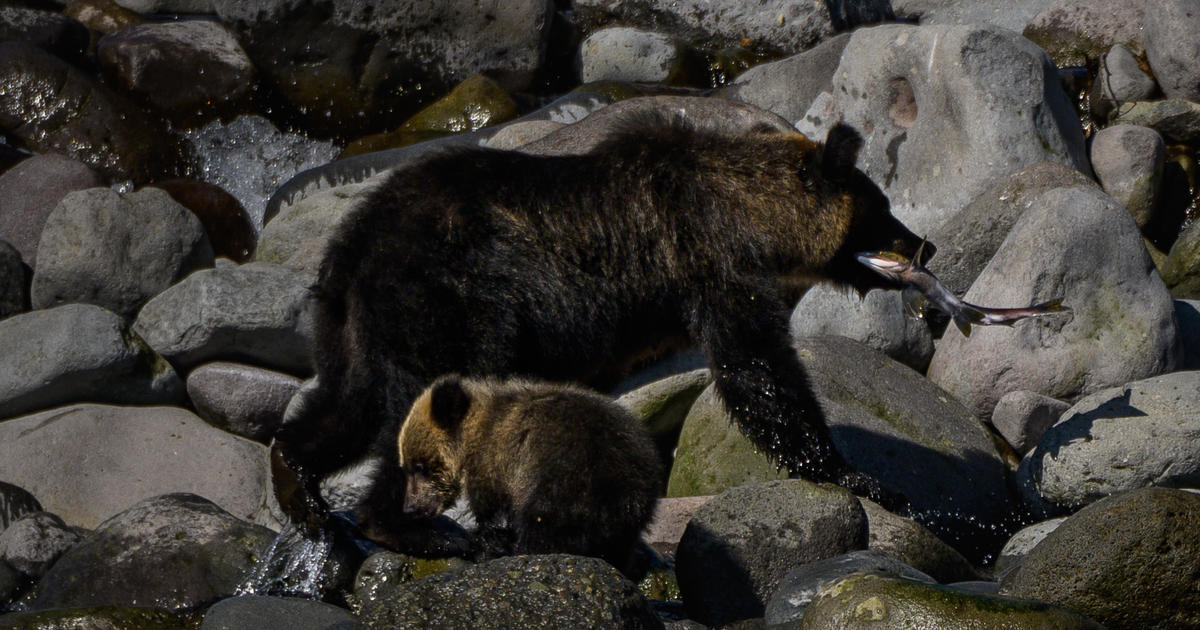5-time Iditarod champ Dallas Seavey kills and guts moose after it injured his dog: "It was ugly"
A veteran musher had to kill a moose after it injured his dog shortly after the start of this year's Iditarod, race officials said Monday, marking the second time in two years a sled driver was forced to kill a moose after an interaction with a dog team.
Dallas Seavey informed the officials with the Iditarod Trail Sled Dog Race early Monday morning that he was forced to shoot the moose with a handgun in self-defense.
This came "after the moose became entangled with the dogs and the musher," a statement from the race said.
Seavey, who is tied for the most Iditarod wins ever at five, said he urged officials to get the moose off the trail.
"It fell on my sled, it was sprawled on the trail," Seavey told an Iditarod Insider television crew. "I gutted it the best I could, but it was ugly."
On Tuesday, Dallas Seavey Racing said on social media that the injured dog, named Faloo, was in critical condition.
"As a result of an angry moose on the trail, Faloo was flown into Anchorage and was taken to an Anchorage Vet Clinic. Faloo arrived in critical condition and soon after arriving she went into surgery. We received an update yesterday evening that she is out of surgery and remains in critical condition," the team wrote on Instagram, next to a photo of the dog.
Seavey, who turned 37 years old on Monday, is not the first musher to have to kill a moose during an Iditarod. In February 2022, a moose attacked an Iditarod sled team, seriously injuring four dogs. Bridgett Watkins said on Facebook that the moose, after injuring her dogs, wouldn't leave and that the ordeal stopped only after she called friends for help and one showed up with a high-powered rifle and killed the moose with one shot.
In 1985, the late Susan Butcher was leading the race when she used her axe and a parka to fend off a moose, but it killed two of her dogs and injured 13 others. Another musher came along and killed the moose.
Butcher had to quit that race but went on to win four Iditarods. She died from leukemia in 2006 at the age of 51.
This year's race started Sunday afternoon in Willow, about 75 miles north of Anchorage. Seavey encountered the moose just before 2 a.m. Monday, 14 miles outside the race checkpoint in Skwentna, en route to the next checkpoint 50 miles away in Finger Lake.
Seavey arrived in Finger Lake later Monday, where he dropped a dog that was injured in the moose encounter. The dog was flown to Anchorage, where it was being evaluated by a veterinarian.
Alaska State Troopers were informed of the dead moose, and race officials were trying to salvage the meat.
"With help from snowmobile-aided support in the area, we are making sure that every attempt is made to utilize and salvage the moose meat," said Race Marshal Warren Palfrey.
Race rules state that if a big game animal like a moose, caribou or buffalo is killed in defense of life or property, the musher must gut the animal and report it to race officials at the next checkpoint. Mushers who follow must help gut the animal when possible, the rules states.
Palfrey said he would continue to gather information about the encounter as it pertains to the rules, according to the Iditarod statement.
Musher Paige Drobny confirmed to race officials the moose was dead and in the middle of the trail when she arrived in Finger Lake on Monday.
"Yeah, like my team went up and over it, like it's that 'in the middle of the trail,'" she said.
Seavey wasn't the first musher to encounter a moose along that stretch of the race.
Race leader Jessie Holmes, who is a cast member of the National Geographic reality TV show about life in rural Alaska called "Life Below Zero," had his encounter between those two checkpoints, but it's not clear if it was the same moose.
"I had to punch a moose in the nose out there," he told a camera crew, but didn't offer other details.
According to the Alaska Department of Fish and Game, more people in Alaska are injured by moose than by bears each year.
"A moose that sees you and walks slowly towards you is not trying to be your friend; it may be looking for a hand-out or warning you to keep away," the department's website says. "All of these are dangerous situations and you should back away. Look for the nearest tree, fence, building, car, or other obstruction to duck behind."
The 1,000-mile race across Alaska will end sometime next week when the winning musher comes off the Bering Sea ice and crosses under the burled arch finish line in Nome.




